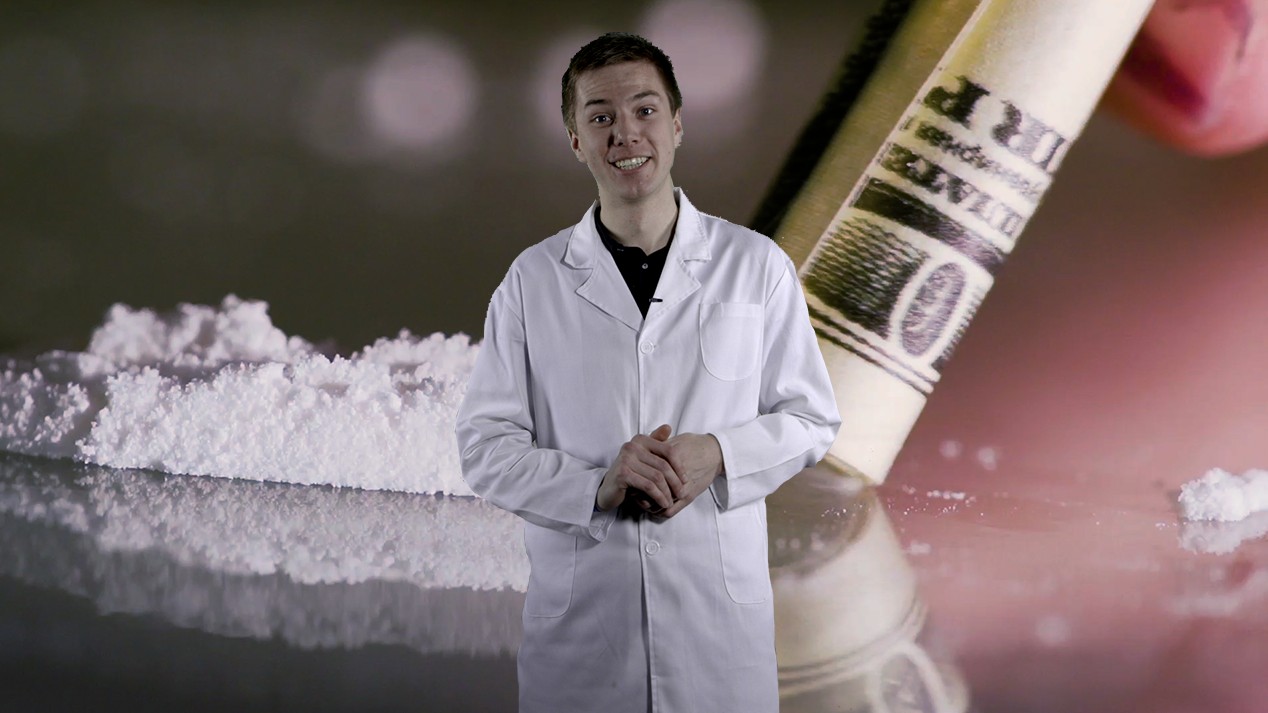On Wednesday, Colombian president Juan Manuel Santos announced that his country's police force had seized 12 tons of cocaine – supposedly the most ever confiscated in one go in the history of the country.Police say the drugs belonged to the elusive Dario Antonio Usuga, AKA "Otoniel" – head of the Gulf Clan, Colombia's most powerful trafficking gang – and that they were discovered underground at four farms in the northwestern department of Antioquia, which was once home to Pablo Escobar's Medellin cartel. Santos remarked that, with this haul included, Colombian police have now seized 362 tons of coke so far this year, already beating 2016's total of 317 tons.So: good news for the Colombian police's PR department. But what does it mean, realistically, for cocaine consumers worldwide?Well, there are 907,185 grams in a US ton, meaning – thanks to this seizure – 10,886,220 grams won't be leaving Colombian soil, bound for the cisterns of Miami's dive bars and the nostrils of 1 in 25 Brits. Of course, assuming this stuff is high purity, and therefore going to be cut when it arrives at its final destination, you'd actually end up with slightly more than that figure. Let's take the UK as a case study: here, cocaine purity is currently as high as 80 percent at street level, so we can up that number by 20 percent, bringing the grand total to 13,063,464 gram-bags of gak.Seeing as we've already done some maths, let's do some more, just for a bit of fun. How long a line could you make out of all those bags? If we say a gram racked up into one long line would come out at about 30cm, totalled up that's 391,903,920cm, or 3,919km – a little longer than the distance between London and Cairo, as the crow flies.This seems like a lot of cocaine, because it is a lot of cocaine. However, as of March this year, Colombia was the world's top cocaine producer, with FARC rebels reportedly encouraging farmers to plant more coca crops after the Colombian government pledged to replace them with legal crops as part of a peace deal with the guerrilla group. According to the US State Department's annual International Narcotics Control Strategy Report, in 2015 – the last year for which figures are available – Colombia had the potential to produce 495 metric tons of cocaine, meaning the 362 tons seized this year won't be anywhere near the full supply. Add to that the fact that Peru and Bolivia also produce a huge amount of cocaine, and the seizures begin to look like less and less of a dent in the overall quantity of coke being exported out of South America.
WATCH: How to Use Cocaine as Safely as Possible
So how, exactly, will this bust affect the global cocaine supply?"Where they find tons, you know there are other tons that get through every week," says Professor Adam Winstock, founder of the Global Drug Survey. "I would not expect much impact on an already flooded UK market [which is seeing] rising purity."George McBride of drug policy think-tank VolteFace agrees. "There are about 900-odd tons produced a year [globally], so it's not a huge amount in the grand scheme of things," he says in an email. "These busts are usually just PR stunts [and] have very little impact on availability, price or purity. We've got a steady supply of cheap pure cocaine at the moment, and production has been on the increase in Colombia, so it isn't coming at a time where it's likely to have a big impact."So there you have it: a good photo-opp – a fun day out for police; a chance to lay out thousands of bricks of cocaine in a big plasticky carpet and stomp around on top of it all – but not really much of a difference being made in the long-run, or even in the short-term.Unfortunately, it's those on the lower rungs of the drug trade who – like always – will feel the impact of the seizure most. "The consequences will be felt closer to home, with repercussions of violence and intimidation," says Winstock of the potential for conflict a seizure of this size creates. "Narcos [drug gangs] remain compelling evidence that the war on drugs is pointless."He makes an excellent point: according to the 2017 United Nations Office on Drugs and Crime report, globally, demand for cocaine is largely just as high as it's ever been. Cocaine production in Colombia is the highest it's been for two decades. Those perpetrating the War on Drugs are clearly fighting a losing battle. People like cocaine; there's a lot of money to be made in cocaine. It's not going anywhere.What's needed is a broad re-think in terms of how best to handle the problem: the introduction of measures that stop so many lives being lost, both in the supply chain and among users with increasingly easier access to dangerously high-purity cocaine.To take part in the Global Drug Survey 2018, an anonymous study of how the world consumes drugs, click here.@jamie_cliftonMore on VICE:How the UK's Coke Got So StrongDoped Up Dogs: Why Greyhounds Are Being Given CocaineI Ran London's Secret Cocaine Speakeasy
Advertisement
Advertisement
WATCH: How to Use Cocaine as Safely as Possible

So how, exactly, will this bust affect the global cocaine supply?"Where they find tons, you know there are other tons that get through every week," says Professor Adam Winstock, founder of the Global Drug Survey. "I would not expect much impact on an already flooded UK market [which is seeing] rising purity."George McBride of drug policy think-tank VolteFace agrees. "There are about 900-odd tons produced a year [globally], so it's not a huge amount in the grand scheme of things," he says in an email. "These busts are usually just PR stunts [and] have very little impact on availability, price or purity. We've got a steady supply of cheap pure cocaine at the moment, and production has been on the increase in Colombia, so it isn't coming at a time where it's likely to have a big impact."So there you have it: a good photo-opp – a fun day out for police; a chance to lay out thousands of bricks of cocaine in a big plasticky carpet and stomp around on top of it all – but not really much of a difference being made in the long-run, or even in the short-term.Unfortunately, it's those on the lower rungs of the drug trade who – like always – will feel the impact of the seizure most. "The consequences will be felt closer to home, with repercussions of violence and intimidation," says Winstock of the potential for conflict a seizure of this size creates. "Narcos [drug gangs] remain compelling evidence that the war on drugs is pointless."
Advertisement
